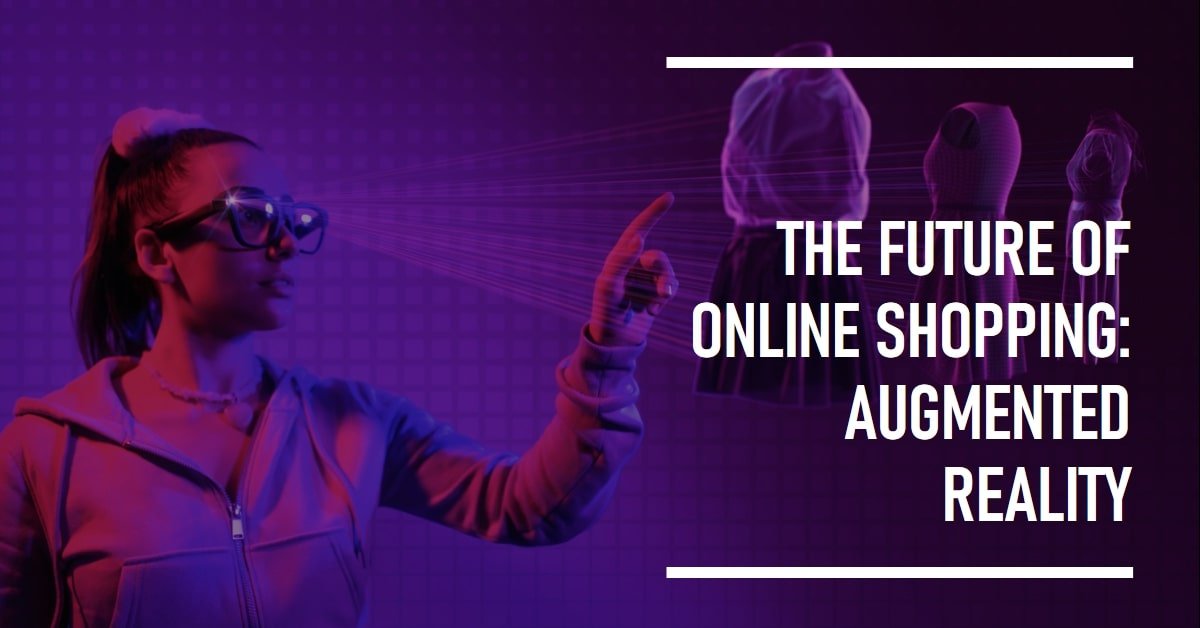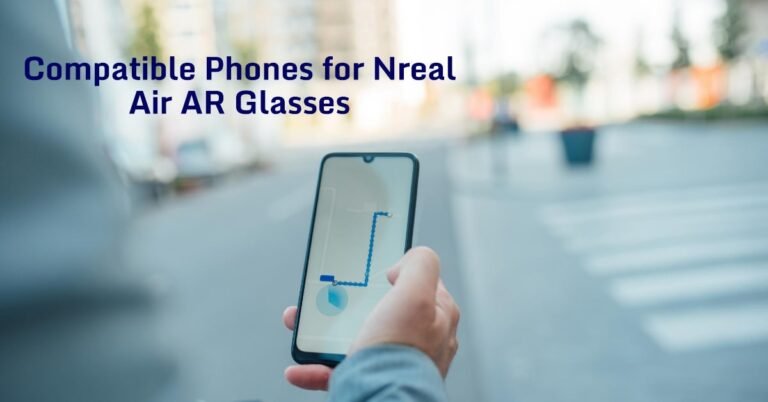Augment Reality AR Shopping: The Future of Online Shopping?
Have you ever hesitated to buy something online because you weren’t sure if it would fit your space or look good on you? Well, fret no more! Augmented reality (AR) is revolutionizing the online shopping experience, making it more interactive, convenient, and enjoyable than ever before. Augmented reality: the future of online shopping? Absolutely! Let’s delve into the world of AR shopping and explore how it can benefit you, the savvy online shopper.
Is Augmented Reality the Future of Online Shopping? A Bold Yes!
Traditionally, online shopping has lacked the immersive experience of browsing in a physical store. Sure, you can zoom in on product photos and read descriptions, but it can still be difficult to get a true sense of scale, fit, or how a product might look in your home. AR bridges this gap by allowing you to interact with products in real time virtually. Imagine trying on clothes without stepping foot in a dressing room, or visualizing furniture in your living room before you buy it. This is the power of AR shopping!
How Does AR Shopping Work?
AR shopping utilizes your smartphone or tablet’s camera to superimpose digital elements onto the real world. Here’s a breakdown of the process:
- Download an AR Shopping App: Many retailers now offer AR experiences through their apps. Simply download the app and browse for products with an AR icon.
- Point Your Camera at a Target: Once you find a product with AR capabilities, launch the AR experience and point your camera’s lens at the designated target (often a product image or marker).
- See the Product Come to Life! Voila! The product will appear virtually in your environment, allowing you to interact with it in real-time. For example, you might be able to see yourself wearing a pair of sunglasses or visualize a sofa in your living room.
How Does Augmented Reality Enhance Online Shopping?
AR offers a plethora of advantages for online shoppers, making the entire experience more engaging and efficient:
Virtual Try-On:
Imagine trying on clothes, makeup, or even glasses without ever stepping into a physical store. AR apps allow you to see exactly how an item would look on you in real time, eliminating guesswork and reducing the likelihood of returns due to poor fit or unsuitable style.
Enhanced Visualization:
Struggling to picture a massive sectional sofa squeezed into your tiny apartment? No problem! AR lets you virtually place furniture in your home to scale, ensuring it fits perfectly before you hit “purchase.” This is a game-changer for home decor enthusiasts and anyone who wants to avoid the hassle of returns.
Detailed Product Information:
Ever wished you could get a closer look at a product’s intricate details or hidden features? AR can overlay detailed information on top of the physical product you’re viewing through your phone’s camera. This can be incredibly helpful for understanding the functionality of complex products or appreciating the craftsmanship of intricate jewelry.
Interactive Shopping Experiences:
AR can transform online shopping from a passive activity into a fun and interactive one. Imagine browsing through a virtual showroom, zooming in on products, and even interacting with them in real time. This not only makes shopping more engaging but also helps you learn more about the products you’re considering.
Reduced Returns:
By allowing you to virtually try on clothes, see furniture in your space, and get a closer look at product details, AR can significantly reduce return rates. This benefits both consumers, who save time and hassle, and retailers, who save money on processing returns.
Increased Confidence in Purchases:
AR shopping allows you to experiment with different styles and options in the comfort of your own home. This can boost your confidence in your purchase decisions, knowing exactly what you’re getting before you buy.
Improved Customer Satisfaction:
By providing a more realistic and interactive shopping experience, AR can lead to higher customer satisfaction. Customers are more likely to be happy with their purchases when they know exactly what they’re getting. This can translate to increased sales and brand loyalty for retailers.
But Wait, There’s More!
While AR offers a bright future for online shopping, there are still some considerations:
- Technology limitations: AR technology is still evolving, and some apps might experience glitches or require high-powered devices to function smoothly.
- Privacy concerns: As AR experiences collect user data, businesses must ensure transparency and user control over their information.
- Accessibility issues: Not everyone has access to smartphones or tablets that support AR apps. Businesses should strive to offer alternative shopping experiences for all.
Real-World Examples of AR Shopping in Action
1. IKEA Place: Ever struggled to visualize how an IKEA couch would look in your living room? No more! The IKEA Place app uses AR to allow you to virtually place furniture in your space, ensuring it fits perfectly before you buy.
2. Sephora Virtual Artist: Want to experiment with different makeup looks without leaving your bathroom? Sephora’s Virtual Artist app uses AR to let you virtually try on various makeup shades and styles. Find the perfect lipstick color or eyeshadow palette before you hit “purchase.”
3. Converse Shop by Snap: Converse has partnered with Snapchat to allow users to virtually try on shoes using their smartphone camera. Simply point your camera at your foot and see how the latest Converse styles look on you in real time.
These are just a few examples of how AR is transforming the online shopping experience. As AR technology continues to evolve, we can expect even more innovative and immersive shopping experiences in the future.
Challenges and Considerations for AR in E-commerce
While AR holds immense potential for online shopping, there are still some challenges that need to be addressed:
- Technical limitations: Current AR technology might not always be able to perfectly capture lighting conditions or account for slight variations in product textures.
- Device dependence: To take advantage of AR features, you’ll typically need a smartphone or tablet with compatible AR software.
- Privacy concerns: Some consumers might be hesitant to use AR apps due to concerns about data privacy and security.
Despite these challenges, the future of AR in e-commerce looks bright. As technology improves and consumer adoption grows, we can expect AR to become an essential part of the online shopping experience.
How Can You Leverage AR for a Smoother Shopping Experience?
Ready to embrace the future of online shopping? Here are some tips to get started:
- Download AR Shopping Apps: Many popular retailers offer AR-enabled apps that let you virtually try on clothes, place furniture, and explore products in detail. Browse the app stores and see what your favorite brands have to offer.
- Find a well-lit space: For optimal AR experiences, find a well-lit space with a clean background. This will ensure the AR elements are accurately superimposed on the real world.
- Calibrate your device: Some AR apps require calibration to ensure the accurate placement of virtual objects. Follow the app’s instructions to calibrate your phone or tablet for the best experience.
- Don’t be afraid to experiment: AR is all about exploration and discovery. Have fun trying on different looks, placing furniture in various arrangements, and interacting with products in new ways.
- Provide feedback: As AR technology is still evolving, your feedback is crucial. Let the developers of AR shopping apps know what you like and what could be improved. This helps them create even better experiences for everyone.
AR Shopping Companies
Augmented reality (AR) is rapidly transforming the online shopping landscape. By allowing customers to virtually try on clothes, see furniture in their homes, and explore products in detail, AR is creating a more immersive and interactive shopping experience.
But which companies are at the forefront of this exciting revolution? Here’s a glimpse into some of the leading AR shopping companies across various industries:
Fashion & Beauty:
- Sephora: Sephora’s Virtual Artist app leverages AR to let users virtually try on makeup before they buy. You can experiment with different lipstick shades, and eyeshadow colors, and even see how the foundation looks on your skin tone.
- Ulta Beauty: Ulta Beauty has followed suit with its own AR app that allows virtual makeup try-ons and helps users discover new beauty products.
- Warby Parker: This innovative eyewear company disrupted the market with its Home Try-On program. While not technically AR, it allows users to virtually try on different glasses using a 2D image overlay, providing a glimpse into how they might look.
Home Decor & Furniture:
- Ikea: Ikea Place is a game-changer for home decor enthusiasts. This AR app lets you virtually place Ikea furniture in your home to scale, ensuring a perfect fit before you purchase that new sectional sofa.
- Wayfair: Wayfair also offers an AR app that allows users to visualize furniture in their homes. You can browse through their extensive catalog and see how different pieces would look in your living room, bedroom, or any other space.
- Amazon: The retail giant, Amazon, has also dabbled in AR with its “Room Decorator” feature in its mobile app. This allows users to virtually place furniture and home decor items in their space using a 2D image overlay.
Footwear & Apparel:
- Nike: Always pushing boundaries, Nike offers the innovative Nike Fit app. This app uses AR to scan your feet and recommend the perfect size and fit for Nike sneakers, eliminating the hassle of multiple returns due to incorrect sizing.
- Adidas: Not to be outdone, Adidas has its own AR app that allows users to virtually try on sneakers and customize them with different colors and styles.
- New Balance: New Balance has also joined the AR game with its app that lets users virtually try on shoes and see how they would look with different outfits.
Beyond the Big Brands:
While major retailers are making waves with AR, there are also innovative startups and smaller companies pushing the boundaries of AR shopping:
- Warby Parker: This online eyewear company disrupted the market with their Home Try-On program. Using AR technology, customers can virtually try on five different pairs of glasses at home before making a purchase. This not only simplifies the selection process but also allows customers to see how the glasses will look with their specific facial features.
- Sayduck: Focusing on the furniture and home decor market, Sayduck provides an AR platform that allows users to visualize furniture pieces within their homes. This helps with layout planning and ensures furniture selections complement the existing decor.
- mirrAR: This cutting-edge AR platform specializes in virtual try-on solutions for jewelry, eyewear, and fashion accessories. By using their app, customers can see how these items would look on them before buying, reducing the risk of impulse purchases that might not suit their style.
Beyond these leaders, many other companies are incorporating AR features into their online shopping experiences. The possibilities are constantly expanding from jewelry stores allowing virtual try-ons of earrings and necklaces to car dealerships offering 360-degree AR views of vehicles.
Finding the Perfect AR Shopping App for You:
With so many AR shopping companies out there, how do you find the right app for your needs? Here are some tips:
- Consider your shopping needs: Are you looking to virtually try on clothes, visualize furniture, or explore beauty products? Knowing what you want to achieve will help you narrow down your app choices.
- Research and compare: Read reviews and compare features offered by different AR shopping apps. Some apps might specialize in specific product categories, while others might offer a wider range of functionalities.
- Download and experiment: Many AR shopping apps are free to download. Don’t be afraid to experiment with different apps to find one that provides a seamless and enjoyable user experience.
FAQs about Augmented Reality in Online Shopping
Is AR safe to use?
Generally, AR apps are safe to use. However, it’s always a good practice to only download apps from trusted sources and be mindful of the permissions you grant to each app.
Do I need a special device to use AR for shopping?
Most AR shopping experiences work on smartphones and tablets with compatible AR software. However, some retailers might offer AR experiences through web browsers in the future.
What are the benefits of AR for retailers?
AR offers numerous benefits for retailers, including increased customer engagement, reduced return rates, and improved product visualization.
What’s the future of AR in online shopping?
The future of AR in e-commerce is incredibly exciting. We can expect more sophisticated AR experiences, integration with artificial intelligence (AI) for personalized recommendations, and a more seamless blend of the physical and digital worlds.
Does AR drain my battery?
Yes, AR apps can drain your battery life faster than regular apps. It’s wise to keep your phone charged while using AR features extensively.
What if I don’t have a compatible device?
The need for compatible devices is one of the current limitations of AR shopping. However, as technology evolves, we can expect AR capabilities to become more widely accessible.
Will AR ever replace physical stores?
Probably not entirely. While AR offers a convenient and interactive online shopping experience, physical stores will likely remain a popular choice for those who enjoy the social aspect of shopping and want to see and touch products before buying. However, AR is poised to become a powerful complement to traditional brick-and-mortar stores.
Conclusion
Augmented reality is no longer a futuristic concept; it’s revolutionizing the way we shop online. By offering virtual try-on experiences, enhanced visualization of products, and interactive shopping journeys, AR is creating a more engaging, convenient, and efficient shopping experience for consumers. While there are still some challenges to address, the future of AR in e-commerce is undeniably bright. So, embrace the future, download some AR shopping apps, and get ready to experience the magic of AR-powered online shopping!
Have you tried using AR for online shopping? Share your experiences and thoughts in the comments below! Let’s discuss the future of AR in e-commerce together.
Remember: Throughout this ARVRRealm blog post, we’ve explored the exciting world of Augmented Reality (AR) and its potential to transform online shopping. We hope this comprehensive guide empowers you to leverage AR for a smoother and more enjoyable shopping experience. Happy shopping!






